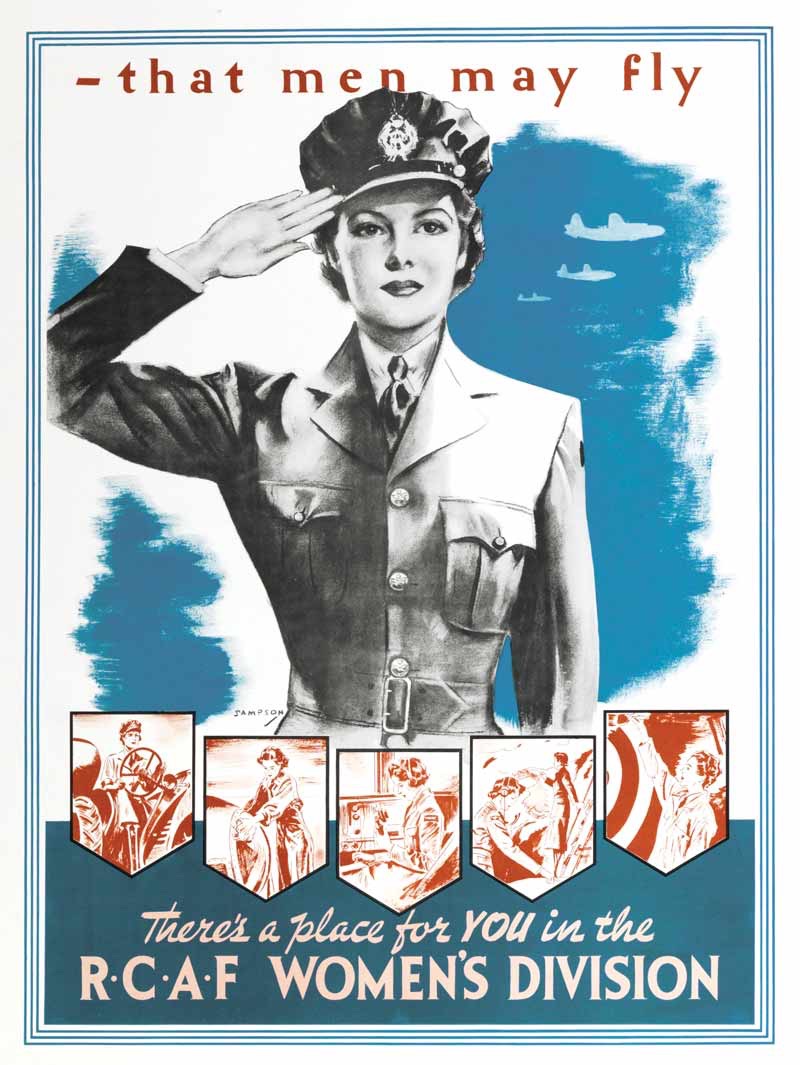Danes in the RCAF Women’s Division
Article
Three Danish women served in the Royal Canadian Air Force during the Second World War. The Canadian Women’s Auxiliary Air Force was created in mid-1941 and became the Women’s Division, an integral part of RCAF, in 1942.
One in seven of all Danish volunteers in the allied air fires was a woman. Danish women served in the women branches of the RAF, RNAF, RAAF, RNZAF and SAAF. A number of naturalised Danish born women served in the Women’s Army Corps in the USA as well.
This article concerns the Danes serving in the Royal Canadian Air Force.

RCAF Women’s Division
Canada entered the war on 10 September 1939. As it had been the case in 1914, thousands of men turned up at the recruiting centres to join up.
Many Canadian women also wanted to serve, but the authorities were reluctant to enlist them in the armed forces other than in medical and nursing roles. By 1941, the RCAF was expanding rapidly, primarily because of the British Commonwealth Air Training Plan (BCTAP). To meet the increasing demand for personnel more and more RAF personnel including members of the Women’s Auxiliary Air Force (WAAF) were arriving in Canada. As it was impossible to explain why British women could serve in the air force, but not Canadians, on 2 July 1941, the Canadian government created the Canadian Women’s Auxiliary Air Force. Approximately 2,000 women responded to the initial call to join the CWAAF; 150 were selected. The first contingent of recruits arrived for training at 6 Manning Depot—the former Havergal girls school—in October 1941. On 3 February 1942, the CWAAF became an integral part of the RCAF, as RCAF (Women’s Division).[1]
Three Danish volunteers
Three Danish women are known to have enlisted in the RCAF during the Second World War.
ACW1 Annelise Jørgensen was one the first Danish national to enlist. Born in 1920, she had left Denmark before the outbreak of war to better her English. As many other young women at the time, she worked as a domestic servant. Following the German invasion of Denmark, she was cut off from her homeland.
She tried to volunteer in England, but they were not prepared to enlist foreign women at this point. Therefore she travelled to Canada, where she had different jobs before she volunteered in mid-1942.
Annelise Jørgensen trained as a Wireless Operator Ground and served at a RCAF Station in Vancouver and later on the west coast at RCAF Station Tofino in British Columbia.

ACW1 Karen Margrethe Østergaard was born in Denmark in 1920. Her family emigrated to Canada in 1929. She enlisted in the Women’s Division in 1942 for general duties and served in Canada as well as in Newfoundland before being released in 1944.
Østergaard was awarded the King Christian X’s Medal for Participation in the War 1940-45 in Denmark after the war.

Flt Off. Annette Augusta Schalburg was the last of the three. Born in Stratford-upon-Avon in 1918 to a Danish father and a British born mother, she was British subject by birth. Her parents divorced and she moved to Canada with her mother.
She attended the Queen’s University in Kingston, Ontario, and passed worked in the Ministry of Education at the outbreak of war.
Annette A. Schalburg volunteered for the CWAAF on 21 October 1941. She was among the first women to serve in the armed forces. She was quickly promoted and, following service in Canada, she was posted overseas in late 1943 or early 1944. She is known to have served at RAF Station Digby and seems to have moved to 62 RCAF Base at Linton-on-Ouse at a later stage.
Annette Schalburg’s father and half-brother served in the RAF, and her father was seconded as the Recruiting Officer, Danish Nationals in London from early 1944. Her cousin was one of the most known Danes in the Waffen-SS and his sister was arrested as a German spy in Scotland during the war.
[1] March, William. RCAF (Women's Division) - The Canadian Encyclopaedia, https://www.thecanadianencyclopedia.ca/en/article/rcaf-womens-division (retrieved on 18 April 2020).